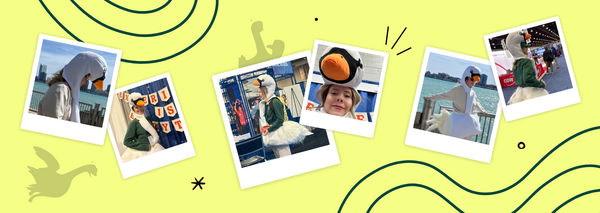The 5 E’s - A Framework for Creating Exceptional Interactive Experiences
When I’m not thinking up celebrity geese doppelgängers to add to our flock - I’m looking at you, Benedict Cumberquack - I like to dig into our massive bank of interactive experiences and look for patterns (yes, that is actually what I do for fun!).
But instead of poking around aimlessly, I’ll often start with a question. And one of the questions I had recently was:
“What makes a great interactive experience? More specifically, what kind of missions are most often represented in them?”
Goosechase is used in a lot of different ways, so finding global commonalities like these is a tall order, but I’d anecdotally noticed a few patterns over the years and wanted to see if they held up.
The Secret to a Great Interactive Experience: The 5 E’s
After digging into this question and analyzing all sorts of experiences, I’ve come to observe that most great interactive experiences have missions that fall into 5 buckets, which we’ve dubbed the 5 E’s:
- Examination
- Exploration
- Explanation
- Extension
- Externalization
Just to be clear, not all of these E’s need to be represented in every experience, but they’re a really good starting point when thinking through how to create a variety of missions that are engaging and achieve your experience goals. So without further ado, let’s get into them!
Examination
What is the ask?: Straightforward question and answer
What is its goal?: Test the participant’s knowledge
This bucket is the most basic of the bunch, but Examination is an old faithful for a reason - it's a litmus test for whether or not someone knows something. Sometimes it's as simple as “do this and take a photo/video”, “answer this”, or “go here”, but they can still be spiced up to be fun and engaging.
I probably wouldn’t advise a full experience with just examination Missions, but they are a great entry-level Mission to get people participating with lower commitment.
Here are some examples:
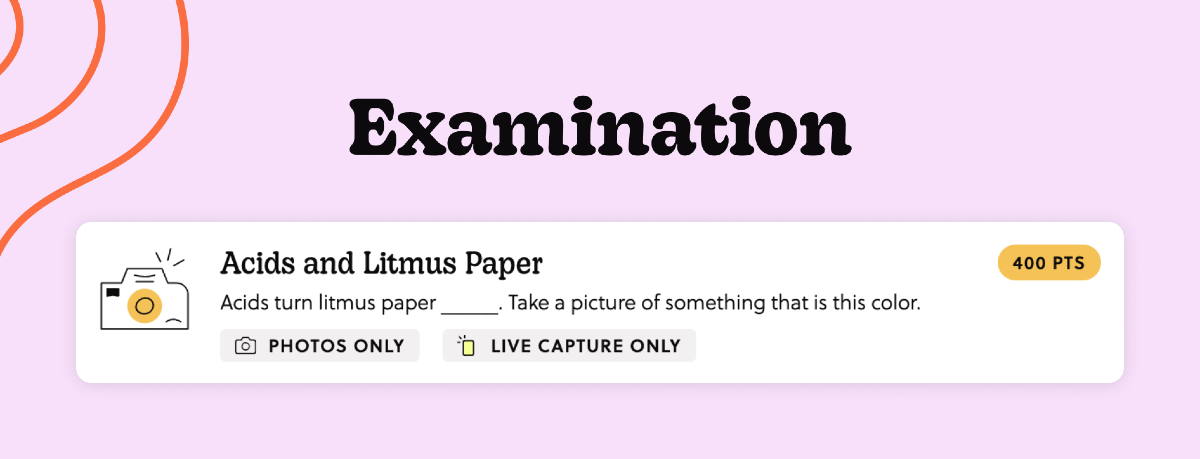


Exploration
What is the ask?: Encourage participants to freely explore the content or a physical location on their own
What is its goal?: Instill the participant with a sense of independence, while promoting curiosity and wonder
Adding a bit more free-choice, Exploration is really valuable for getting people moving around and engaging with an experience on their terms. This is also an opportunity for participants to show a bit more of their personality and interests, highlighting what is interesting to them, which will likely be quite different from others, adding to the dynamism & uniqueness of the experience.
Here are some examples:
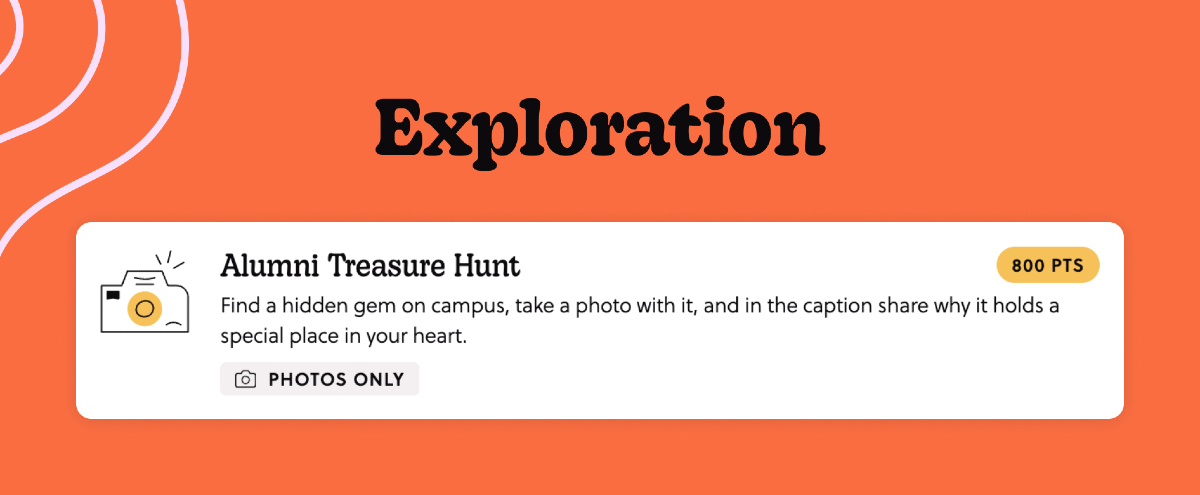


Explanation
What is the ask?: Ask participants to take what they’ve learned or discovered and describe it in their own words, often applying it in a new context
What is its goal?: Solidify the participant’s understanding of a topic by asking them to clarify it, or to draw parallels between it and other concepts
A huge part of experiential learning is reflecting and conceptualizing, which Explanation helps to explicitly promote. It raises the stakes a bit as well, as participants can’t just repeat back what they heard, they have to actually understand what they’ve been taught and be able to apply it to their own context. This results in retention of knowledge that is far greater than it would otherwise be, but it also allows people to add in their own flair to keep things interesting.
Here are some examples:
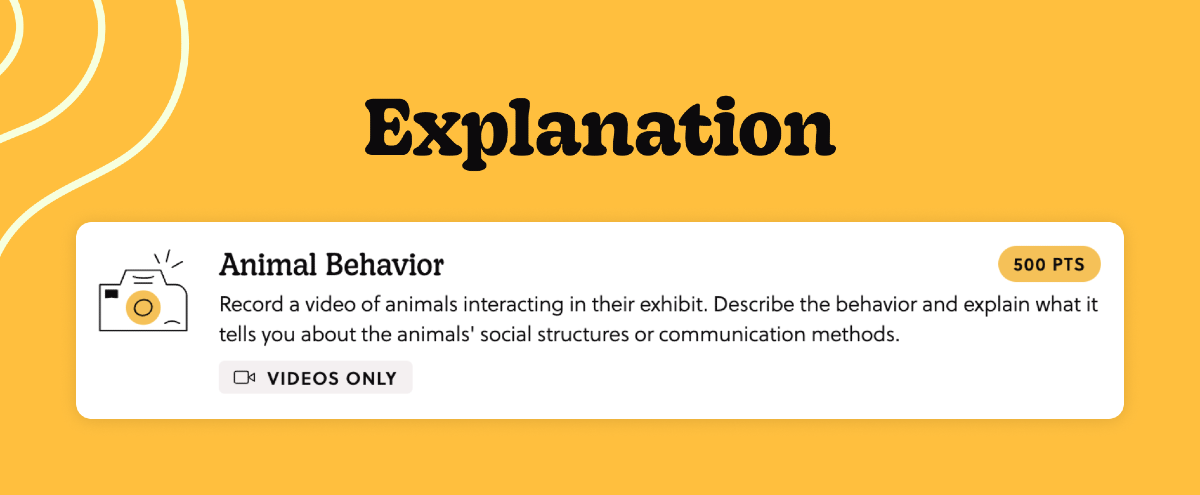


Extension
What is the ask?: Use their knowledge to create something brand new, re-enacting or engaging with content in a creative way
What is its goal?: Build on the participant’s knowledge and understanding of something by asking them to create something brand new
If Explanation is about describing what they’ve learned, Extension is about building on top of it. At the most basic level, this can look like playfully acting a concept out, creating a tangible representation of something abstract, but can go all the way up to actually creating a physical object or a clever skit/short video to demonstrate their applied knowledge. There’s lots of room for flexibility, but the core of Extension is to create something on top of what has been learned.
Here are some examples:
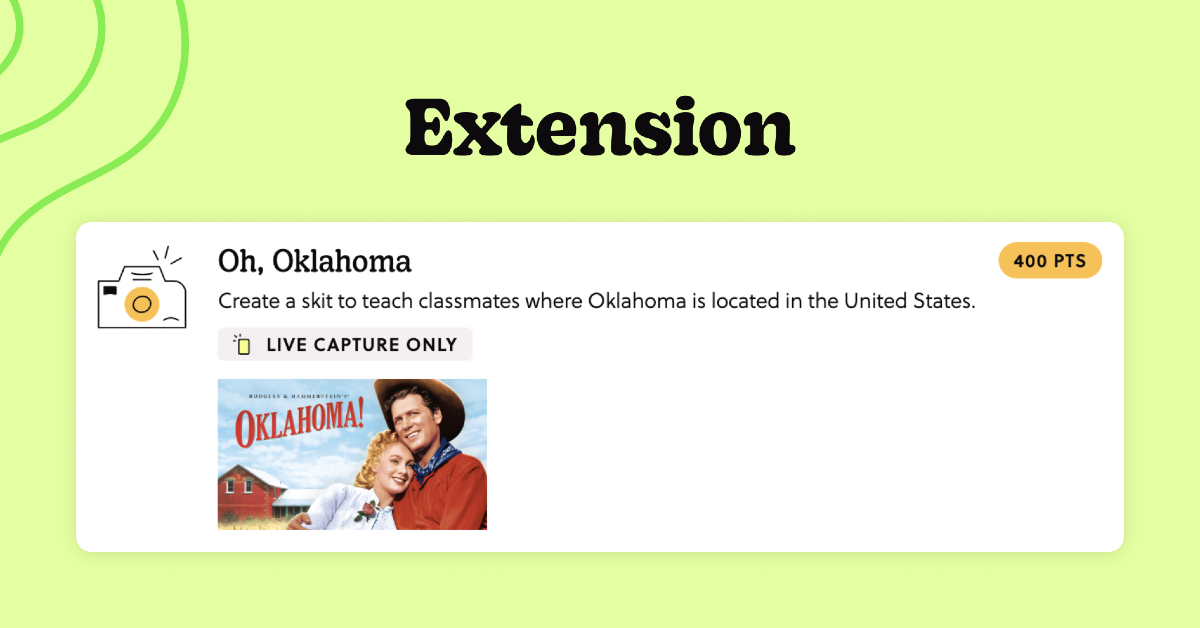
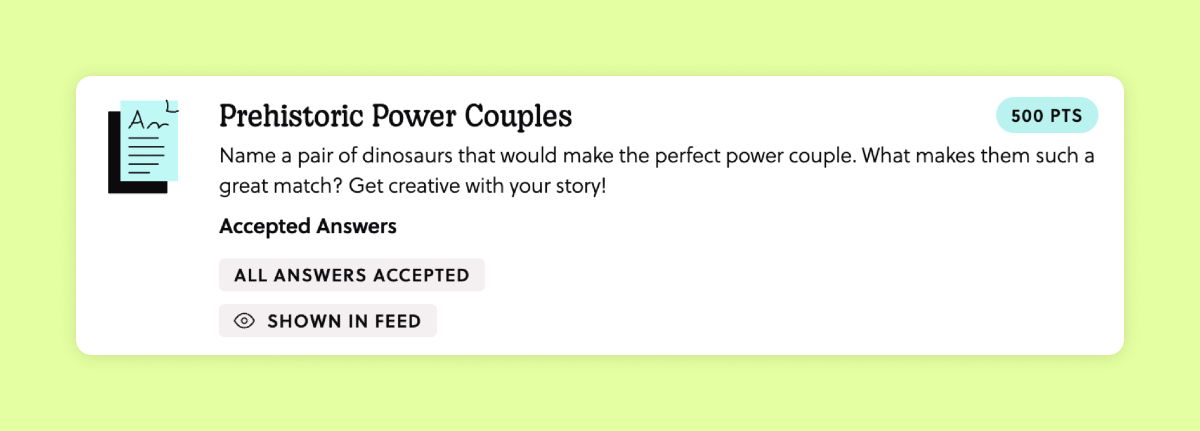

Externalization
What is the ask?: Encourage interaction with others, adding a social dynamic to the experience
What is its goal?: Spark social bonds between people, enriching and embedding their new knowledge through personal connection
Even if we’ve nailed the above four buckets, it’s critical to remember that the best experiences aren’t solo endeavours, they’re inherently social. Externalization is the crucial 5th bucket to remind us to embed social interactions into our experiences wherever possible. Beyond just being more fun, whether it's learning, engagement, or both we’re after, adding that Externalization, that social dynamic, is crucial to getting the best results.
Here are some examples:
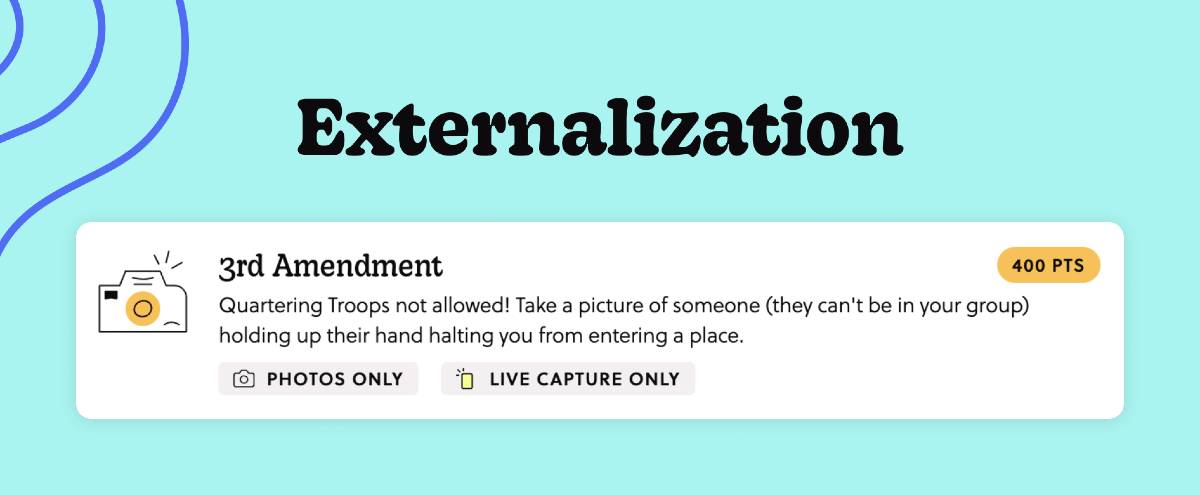
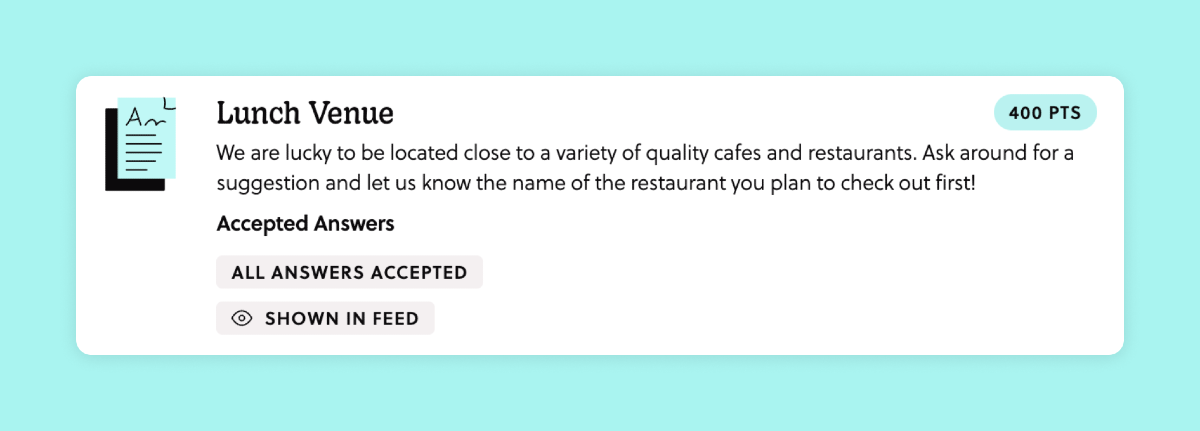

Now, not every experience needs to have all 5 E’s represented equally, and some Missions can actually belong to multiple buckets (e.g. Externalization can often be blended in with the other buckets), but they’re a great jumping off point.
In fact, I’ve actually found myself intentionally designing experiences by asking what E’s feel underrepresented and then tweaking as needed until I feel like there’s a better balance. It gives me a framework to explicitly think things through and ensure my experience is covering as many bases as possible.
Not all questions I poke into amount to much, but in this case digging into the Mission types represented in great experiences seems to have resulted in something pretty valuable! Not only are the 5 E’s easy to remember (EEEEE!), but they’re immediately applicable and have already been used with great effect when creating high quality experiences. I hope you’ll be able to get as much use out of them as I have!
What is Goosechase?
At Goosechase, experience is everything. Originally inspired by scavenger hunts, Goosechase is an online platform that enables organizations and schools to engage, activate, and educate their communities through delightful interactive experiences. Sign up and try creating a free recreational Experience, or check out our Pricing!




